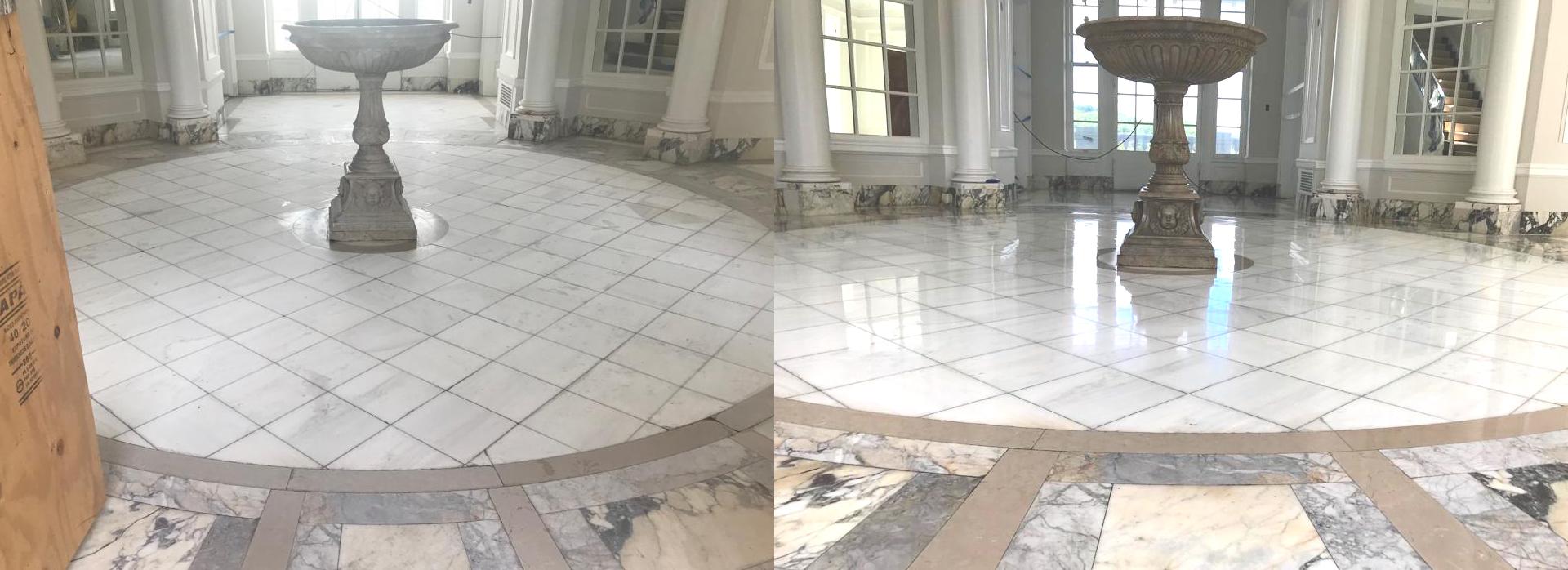Marble Restoration involves restoring marble surfaces to their original beauty. Marble is a material that has been used for centuries and is still used extensively in interior design today. It is virtually impossible to go too far in finding marble pieces. A perfect example of this is found at the US Space Shuttle Program where the interior monolith that holds the international space station is made of marble. Marble has a timeless aesthetic appeal that can be paired with practically any setting.
Marble restoration generally has a natural, luxurious look to it. Marble Restoration improves the look of wooden kitchen countertops, which assists to increase the resale values of a house. In a sacred place of worship, marble restoration enhances the spiritual dedication and commitment of devotees and encourages the loyalty and community of others who come to your temple. In addition to this, marble restoration is often done to preserve important icons that hold special meaning for the people who own them.
Polishing and sealing are both important components of marble restoration. Marble cleaning is a more delicate task, since small mineral particles are difficult to remove without using some kind of chemical solvent. On the contrary, marble restoration professionals use sealing agents to seal surfaces that have been stained as well as restore cracked stone or polished stones.
Marble is susceptible to scratches, wears and damages because of everyday use. Cleaning these impurities out helps to prevent serious damage. However, cleaning marble restoration materials without using any chemicals can cause permanent bleaching, cracking and discoloration. If you notice these kinds of blemishes after polishing or sealing marble floor, the best thing to do is to send the area to a professional cleaning service for cleaning. You may also want to start using a natural floor wax to add protection, shine and overall beauty.
Marble is one of the hardest materials available for stone flooring. As a result, improper care and handling can lead to damage to the stone surface. When marble or granite has a deep cut, it can cause deep scratches on the floor. This may require specialized marble restoration techniques to repair, such as honing or buffing.
There are a few different types of marble restoration techniques available for repairing and restoring the surfaces. One way to seal and refinish the surfaces is called tile repair. This process involves removing the stains, blemishes and tile marks by using high-pressure hot water that is then cleaned and allowed to dry in a special steam solution. The end result is a professional looking floor that has been completely sealed and refinished.
Another type of marble restoration is called cleaning and restoration. This method is used to restore badly stained granite and marble surfaces. To perform this treatment, highly acidic solutions are applied using a machine. Afterward, the floors are vacuumed to remove the remaining residue. The floor is then cleaned with commercial cleaners to get rid of any left-over cleansers. Once the floors are cleaned, they are polished to regain their gloss and shine.
For more abrasive but beneficial marble restoration techniques, the professionals also perform the use of polishing pads. Marble polishing pads are designed to remove the smallest scratches and stains without damaging the natural stone surface. The polishing pad uses micro fibre pads that contain abrasives. The abrasives are not harsh like detergents but they are quite effective and will remove the smallest scratches. Polishing pads have become popular with the consumers who want to preserve their valuable stone pieces. They help to maintain the beautiful shine of the natural stone flooring.
For marble restoration – a highly experienced team provide best services. Speak to our experts today.

